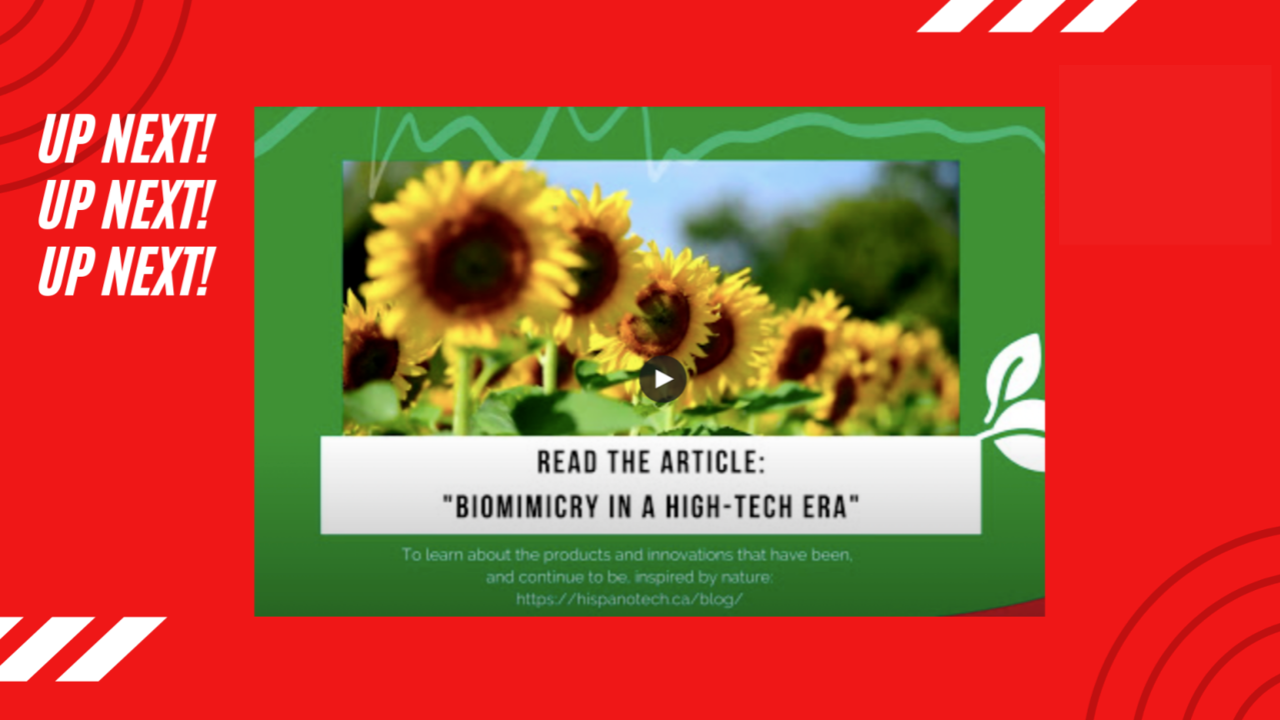
When people are asked to think about the ideas that fuel technology advancement and innovation, few people would probably think of nature. Nature and technology? Technology and nature? Those two topics seem to be opposing forces! But are they really?
Some creative minds have realized that nature is the oldest and most experienced engineer, one that for over 3 billion years has tested, adjusted, and perfected many of the patterns, elements, and designs that exist in our ecosystems today. Humans on the other hand have populated this Earth for about 1 or 2 million years which is just the blink of an eye when comparing both our evolutionary periods.
Biomimicry, also called Biomimetics, is the art of drawing inspiration from nature to recreate the solutions found in our environment to solve the challenges we face as human beings.
Technology as nature, is all about iterations. Things need to be designed, built, deployed, tested, and then enter the reconfiguration cycle again and again and again until they are ready for roll-out. But nature has been running these tests in its own elements for billions of years and it has already perfected things that we have barely begun to scratch the surface of, as a younger species.
It sounds new and revolutionary, but biomimicry is not a new practice; it has existed for years. Here are a few examples of some products inspired by nature:
Velcro: After returning from hiking in the woods, an engineer called George de Mestral noticed there were Burdock burrs attached to his clothing and realized there was a potential to replicate this weed’s attachment ability into a commercial solution.
Gardens by the Bay: This garden in Singapore has 18 “super trees” that follow the same principles of environmental sustainability as a natural tree. These super trees are used to provide shade, purify the air, harvest water, and seize the sun’s energy through its solar powered branches.
Japan’s bullet train: Engineer Eiji Nakatsu worked in the development department of the bullet train in Japan. As an avid birdwatcher, after attending a lecture on birds he realized that mimicking some elements and movements of these creatures could improve the train’s design and efficiency. One of his biggest inspirations was the kingfisher bird, which allowed the train to reduce its sonic boom effect, increase its travelling speed and reduce costs.
Self-filling water bottle: The Namibian Desert beetle is an insect that harvests moisture from the air, condenses these molecules in its cooler body and then directs these droplets to its mouth to survive. A US start-up is using biomimicry to create a self-filling water bottle that can provide this element to communities in arid areas by emulating this beetle’s water-gathering process.
Additional things nature has learned to do during these billions of years of research are: create strong adhesives like the ones found in spiderwebs, keep structures at a stable temperature with natural cooling systems such as the ones found in termites’ mounds, produce self-cleaning elements such as the surface of the lotus plant, create sticky elements without any adhesive such as the ones found in geckos foot pads, and produce bacteria-repellent surfaces such as the skin of the Galapagos shark. All these natural creations have been thoroughly studied and they have inspired amazing technological designs that have positively impacted sectors such as health, electronics, communications, architecture, and more.
There are so many examples of improvements, efficiencies and innovations that have resulted from the study of natural forms that it would be impossible to cover them all in this article. However, it is important to recognize that nature is a magnificent teacher, and that years of evolution are providing engineers, scientists, chemists, and industries with a myriad of lessons to support their journeys towards solving complex design challenges in a highly technological era.
– Nayely Figueroa